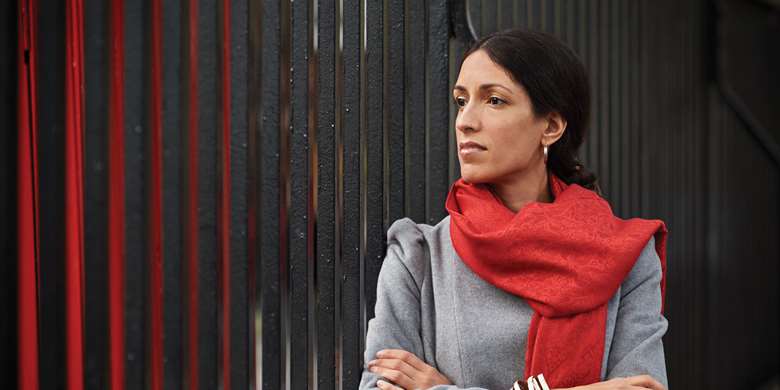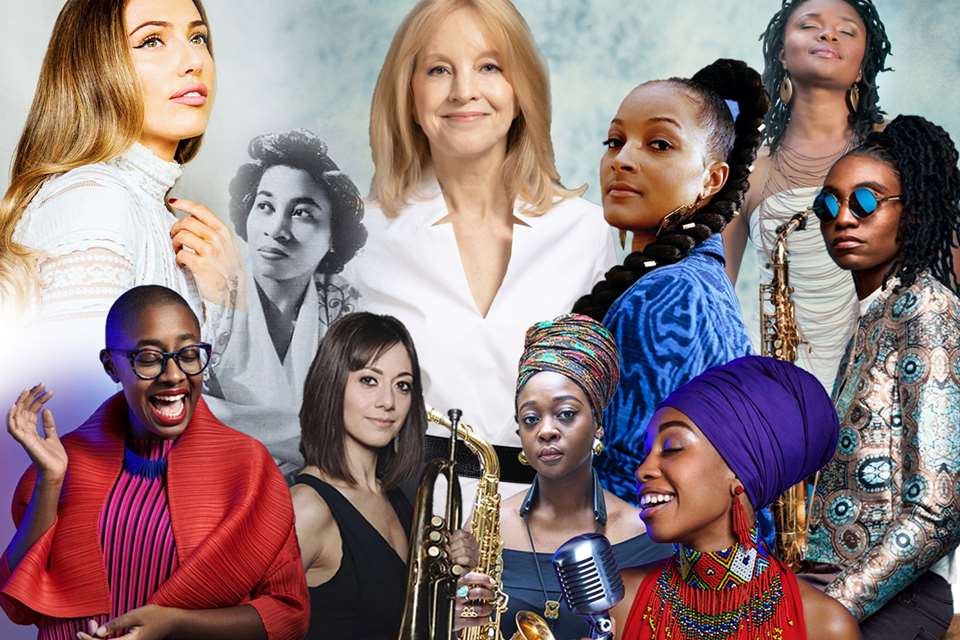Zoe Rahman interview: “If someone comes up to me crying after a gig I know I’ve done a good job”
Monday, December 14, 2020
Multi-award winning pianist and composer Zoe Rahman has taken the solo route on her album Dreamland, a personal journey of covers and rhythmically-charged originals. Marking a new creative chapter in a career that’s seen her work closely with Courtney Pine and her own Mercury Prize-nominated trio, Rahman spoke to Peter Quinn about the process of going it alone

For any artist, the solo album presents a fascinating conundrum. On the one hand, how to fill the blank canvas of an album-length space presents any number of technical and aesthetic challenges. On the other hand, given the absence of other collaborators, it presents an unparalleled opportunity to channel your voice in its purest, most unadulterated form. Following the release of her own solo album, Dreamland, MOBO and Parliamentary Jazz Award-winning pianist and composer Zoe Rahman knows all about having to solve these musical puzzles.
“With a band you have plenty of places to hide”, Rahman tells me. “When it’s just you and the piano, it’s a completely different process. In terms of bouncing off other instrumentalists, the piano itself is like another person in the room. You have to have that dialogue with the instrument. It takes time to get used to the instrument and see what it can do for you. The piano allowed me to do certain things that I wasn’t expecting, and it didn’t allow me to go in certain areas that I hoped I would. So it’s interesting listening back to what I managed to come up with. For me, it’s all about the element of surprise anyway, and that’s one of the exciting things about being a piano player – you don’t take your instrument with you. You have to really draw out what it is in the instrument, and that keeps your mind active during the process of recording.”
Every time I make an album it’s at a point in my life where I feel I’ve got something to say. It’s all an evolution, they’re all points in my life, they’re all strands of me as a human being
Possessing a palpable visceral power, Dreamland is an album that hits you at a very emotional level, from the powerful left-hand ostinatos and layerings of album opener ‘Red Squirrel’ and the almost Stravinskian block chords of ‘The Epicentre’, to the masterly solo reworkings of ‘J’Berg’ and ‘The Calling’, from her Mercury-nominated album Melting Pot, and the all-enveloping soundworld of ‘On the Road’.
“How I want people to feel when they’re listening to it is as important as how I’m playing. It’s not always about the notes and the pieces – it’s beyond that. That’s the beauty of jazz: it’s about self-expression. I think a lot of people shy away from that, but for me it’s the heart of the music. I love to listen to people where you can absolutely hear their personality in their music: people like Joanne Brackeen, Monk, Mary Lou Williams, Sun Ra. They all have their distinct style. You have to understand how other people play and what makes them tick before you can really get to what it is about yourself that you want to express.”
Rahman’s choice of covers on Dreamland is revealing. From the overtly Monk-like approach to ‘These Foolish Things’ and Ellington’s gorgeous ‘A Single Petal of a Rose’, to the percussive pattern-making of Jessica Williams’ ‘The Sheikh’ and Abdullah Ibrahim’s ‘Sunset in Blue’ from African Piano, each piece explores the disparate styles of singular pianist-composers.
“Those are the people that inspire me, as a musician, because they have their sound,” Rahman says. “Especially Ellington, he’s so orchestral in his thinking and in his playing. Monk was very much in mind when I was recording ‘These Foolish Things’. He has a deep rhythmic sense, he really plays into the piano. Jessica Williams, again, I love the way she plays that composition – it’s a very deep sound. And the same with Abdullah Ibrahim. They all have big sounds. I love playing with other musicians, and no disrespect to anyone I’ve ever worked with, but really the piano is an orchestra in itself. There’s so much range within it – dynamically, texturally, tonally – that you could spend a lifetime just playing piano and still have more to explore.”
Then there’s the extraordinary piece by the Bengali polymath and Nobel Laureate, Rabindranath Tagore, ‘Kar Milono Chao Birohi’, which conjures up an entirely different soundworld. Learnt from the Bengali vocalist Sahana Bajpaie, for whom Rahman made an arrangement of the song, it unfolds in a fascinatingly different time and space. “That particular track has got a very different rhythm – it’s in seven – and harmonic sound. It’s a very atmospheric piece. I love the tune and it just seems to take people on a slightly different journey from the rest of the album. I do think carefully about how people are going to listen to the album as a whole, even though these days people are listening to music in a different way. But I still like to make albums that take people on a journey.”
From her very first composition, ‘Apple Pie’, a left-hand driven, groove-heavy piece cast in 11 which Rahman recorded on her 2001 debut album, The Cynic, a fascination with rhythm has been ever present, and it comes as no surprise to discover that Bartók was one of her favourite composers while studying classical music at Oxford University.
“When I heard my first jazz gig, the thing that struck me that was so different from classical music was how people used rhythm. For me, that’s what drew me to the music. As a jazz musician, the thing that makes me want to play is working with time, playing around with the feel of the music, really getting into the groove. It’s a black American art form, and I want to be in touch with that history in my playing, otherwise I wouldn’t feel that I was playing jazz.”
While every album represents an important snapshot, I wonder if any of Rahman’s recordings have a particular importance for her in terms of the evolution of her style? “Every time I make an album it’s at a point in my life where I feel I’ve got something to say. It’s all an evolution, they’re all points in my life, they’re all strands of me as a human being. I find it very hard to listen back to myself but this new one, and also Where Rivers Meet, are the two albums I don’t mind putting on. Where Rivers Meet was a very different journey for me – none of the tracks were written by me, so I have a distance from them, which is probably why I can listen to the album. I loved arranging it for a different line-up, working with singers, a violinist, a clarinet player and tabla. And also, at the very end, there’s the rickshaw sounds of the street in Bengal. I tried to paint a picture of my idea and my experiences of Bengal, through my father. And those were the tunes that he loved. That has a special place, for me, that album, in my journey. And that’s partly why I did a solo album this time – because I’ve done the trio thing on a few albums now, and I just felt it was time.”
One thread that seems to run through all of Rahman’s recordings is a seeming desire to make connections: musical, geographical, cultural. And this desire underpins her effervescent live performances, in which you sense a real connection between Rahman and her audience. “As a listener, I’ve seen lots and lots of gigs and the performers who draw me in are the people who take you on a journey. That’s very important. The whole reason I make music is to take people out of whatever it is they’re doing, and they come into a space and take another journey. This sounds terrible, but if someone comes up to me crying after a gig I know I’ve done a good job. You have to feed off the audience, otherwise you will just withdraw into yourself. It’s a hard thing to be a musician and to be up there baring your soul. If you can draw the audience in to what you’re doing they’ll only help you get the best out of yourself.”
Rahman’s personal journey now includes a two-year-old son, “a massive change in my life and the best thing in the world”, she says. “In terms of day-to-day practise I’m doing nowhere near what I used to do, but in a strange way that’s freed me up to play. I’ve been doing gigs with my band and touring with Courtney Pine in a duo setting, so I’ve been very fortunate with that because it really has kept my playing up to a certain level.”
Encapsulating Rahman’s unique harmonic, melodic and rhythmic approach, Dreamland confirms that the level is still dizzyingly high.
This interview originally appeared in the August 2016 issue of Jazzwise magazine. Never miss an issue – subscribe today
